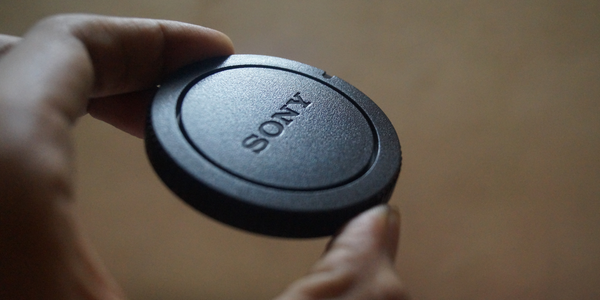A Case Study in Product Costing Software: How Axcelis Technologies Saved 10% on a Large Spend
Customer Company Size
Mid-size Company
Region
- America
Country
- United States
Product
- aPriori
Tech Stack
- Automated Cost Analysis
- Spend Analytics
Implementation Scale
- Enterprise-wide Deployment
Impact Metrics
- Cost Savings
- Customer Satisfaction
- Productivity Improvements
Technology Category
- Analytics & Modeling - Predictive Analytics
- Functional Applications - Product Lifecycle Management Systems (PLM)
Applicable Industries
- Semiconductors
Applicable Functions
- Product Research & Development
- Quality Assurance
Use Cases
- Predictive Maintenance
Services
- Software Design & Engineering Services
- System Integration
About The Customer
Axcelis Technologies is a company that has been in business for over 35 years, specializing in building semiconductor manufacturing equipment, particularly ion implantation systems. These systems are critical in the integrated circuit (IC) manufacturing process. Despite being a relatively small company, Axcelis has a strong focus on value engineering to reduce costs and create more efficient processes and products. The company needed a software solution to help eliminate costs and save money, leading them to adopt aPriori, a product costing software. The business excellence manager at Axcelis, who has a background in value engineering, Six Sigma, and strategic sourcing, played a key role in this adoption.
The Challenge
Axcelis Technologies, a semiconductor manufacturing equipment company, faced significant challenges in controlling and reducing costs. As a relatively small company, they needed a software solution to help eliminate costs and save money. The primary purpose of value engineering at Axcelis is to reduce costs and increase margins by redesigning or modifying designs. However, the process is complex and depends on when the team enters the process. The company adopted aPriori, a product costing software, to address these challenges. Initially, it took time to set up the software properly and learn how to use it to its maximum potential. The goal was to streamline the process and save on material costs and labor hours.
The Solution
Axcelis Technologies adopted aPriori, a product costing software, to address their cost control and reduction challenges. The software allows for automated cost analysis, enabling faster and more accurate cost quotes. This capability is crucial for value engineers who need to make informed decisions quickly. aPriori can run several different scenarios at once, allowing Axcelis to adjust costs on the fly. The software also helps in cost avoidance by identifying suppliers that offer parts at higher costs than alternatives. By scanning through 100 machined and sheet metal parts, aPriori helped Axcelis identify cost and design outliers, leading to more informed supplier negotiations. The platform's ability to manipulate data and run different iterations while waiting for quotes has been instrumental in making cost-effective decisions.
Operational Impact
Quantitative Benefit

Case Study missing?
Start adding your own!
Register with your work email and create a new case study profile for your business.
Related Case Studies.
Case Study
KINESYS Semiconductor Factory Automation Software
KINESYS Software provides both Integrated Device Manufacturer (IDM) and Original Equipment Manufacturer (OEM) customers world-class software products and solutions for advanced wafer and device traceability and process management. KINESYS offers state of the art database technology with a core focus on SEMI standards. KINESYS’ challenge was to make back-end processing failure-free and easy to use for clients while supporting licensing models more adaptable to changing industry needs.

Case Study
Modular AI Defect Inspection Solution for Efficient Semiconductor Equipment Upgrades
Smasoft Technology Co., Ltd., a System Integrator that develops industrial automation software and offers AI application solutions, was commissioned by a semiconductor equipment manufacturer to implement AI inspection features into their Extreme Ultraviolet Light (EUV) pod inspection machines. The existing AOI software in the EUV pod inspection machines could only identify defective products but could not trace the cause of the defects. The manufacturer wanted to upgrade their machines with AI features to make the products more useful. The AI solution needed to complete the analysis of 380 images for a single pod within two minutes and inspect different materials simultaneously. This required multiple sets of AI models for interpretation. The solution also needed to be installed in a cabinet in the lower half of the machines, which posed a challenge due to the limited space. Smasoft needed to purchase a hardware solution with strong computing performance, stable operation, compact size, and flexible configuration to overcome these challenges.

Case Study
Optimizing Semiconductor Manufacturing Yield with IoT
A large U.S.-based manufacturer of high-performance semiconductors was facing a significant challenge in optimizing the manufacturing process of its wireless products. The company, which designs and delivers a broad set of cutting-edge products including radio frequency filters, amplifiers, modulators, attenuators, and more, was experiencing lower than expected overall yield in some of its most complex products. This was affecting the company's productivity and profitability, and there was a need for a solution that could predict low-yield wafers early in the process and identify process improvements to increase overall yield.
Case Study
Rapid Hybrid Services Deployment for Global Semiconductor Company
The U.S. manufacturer of engineered materials, optoelectronic components, and semiconductors was focused on growth through mergers and acquisitions (M&As). In 2019–2020, it acquired a global electronics firm and needed immediate connectivity and visibility into the acquired firm’s geo-distributed operations. The company had a highly compressed timeline, with only days to integrate the firm’s DDI operations, while deferring a full network migration to a future date. The company was actively engaged in acquiring and merging strategically aligned companies as a key global growth strategy. The company needed to rapidly integrate its new operations, which included significant remote locations in Asia. The company turned to Infoblox to quickly design a highly secure, available, and reliable solution that could deliver full visibility into new sites. It needed dynamic scalability to accommodate its growing operations and the ability to unify a disparate, geo-diverse infrastructure.

Case Study
Sony Italia's Server Consolidation: A Cost-Saving Success
Sony Italia, a branch of the global electronics giant Sony Corporation, was facing a significant challenge with its IT infrastructure. The company had consolidated most of its IT infrastructure into two data centers in the U.K, but Sony Italia opted to maintain its local server infrastructure for high performance and ease of maintenance. However, as data volumes and user numbers grew, the servers began to experience reduced performance and reliability. The company had 30 physical servers, but with limited budgets, replacing all of them was not feasible. Additionally, Sony Italia was concerned about the increasing heat output and electricity consumption in the data center. The company had already virtualized about half of its infrastructure, but needed a more cost-effective solution to extend these benefits.







